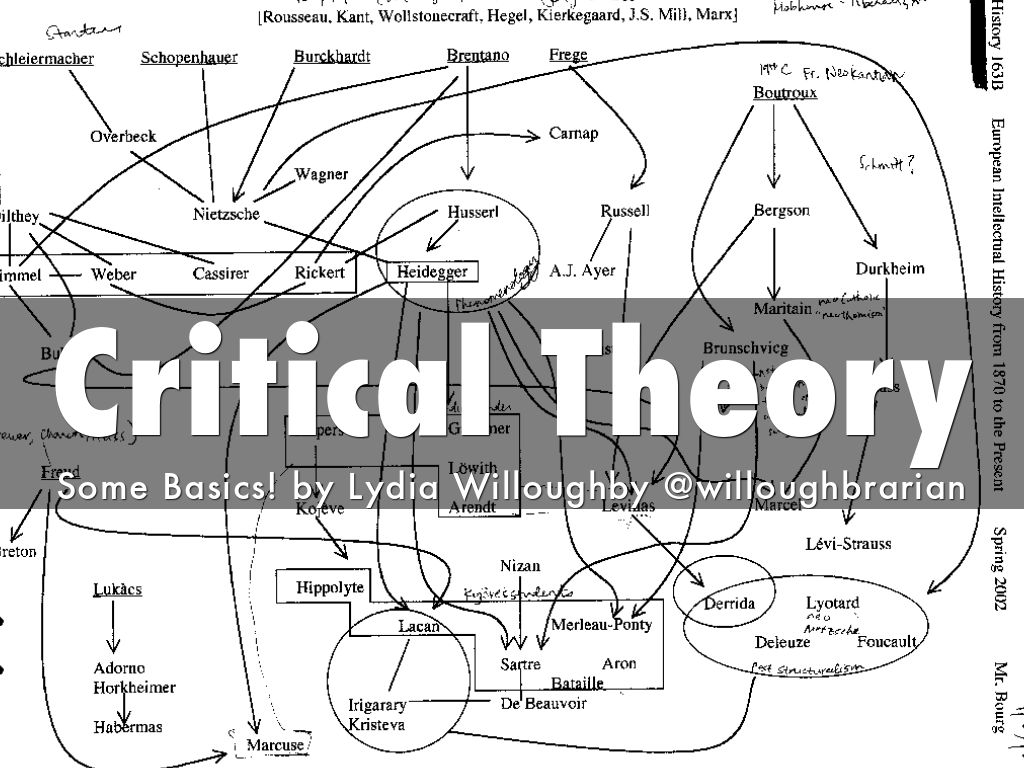
Critical Theory
Critical theory is a foundational
perspective from which analysis of social action, politics, science, and other
human endeavors can proceed. Research drawing from critical theory has critique
(assessment of the current state and the requirements to reach a desired state)
at its center.
Critique entails examination of
both action and motivation; that is, it includes both what is done and why it
is done. In application, it is the use of dialectic, reason, and ethics as
means to study the conditions under which people live. This entry describes the
development of critical theory and its applications to a variety of research
questions.
Although there are three
identified stages of critical theory, all three conceptions have methodological
value. There are some conceptual and foundational differences among the three
stages, but there are questions as to which methodological specifics of each stage
can be applied. The realm of social theory generally is extremely broad; any
historical, political, economic, and technological elements can be studied in
depth. Furthermore, conceptions of ideology can be applied to analysis in
numerous ways. Therefore, the changes to critical theory do not represent suppressive
variables. Because of the breadth of critical theory’s brush, many kinds of
questions may be amenable to its application.
The observation consists of the
living conditions of individuals, the kinds of work being done and the places
where the work is done and spatial limitations that effectively limit movement,
living space, and other kinds of existence. The observation is informed
(shaped) by critical theory.
Opportunities for observation in
the critical theoretic framework exist in the normal course of events. For
example, a city may plan to rejuvenate a downtown area that has fallen into a
state of deterioration. The plan could involve housing, retail business, office
space, and other elements. Initially, the plan will likely be subject to review
at several levels, including community response.
Individuals, who are other selves, apprehend their lived
lives in some particular ways. For instance, spatial limitations might be
perceived not merely as geographic boundaries but also as social and cultural
boundaries. The meaning of perceptions can be comprehended by researchers only by
inquiring of the individuals. Asking people what they believe is open to them
and what is closed is the practical application of reason by the researcher.
The interviewing process also opens the potential practice of reason on the
part of the interviewees.
The second and third stages of critical theory, in particular,
pay attention to people lived lives. The second stage is especially influenced
by Habermas’s work in communicative action and discourse ethics. During this
stage, a more pragmatic focus to inquiry is evident.
One factor that pervades all three stages of critical theory
is the recognition that reason is possible and necessary for human action. The
practice of critique depends both on reasons as a tool for the practice and on
observation of practical reason. Reason as applied by the researcher entails
the avoidance of engaging in human behavior and action as instrumentalities.
Analysis grounded in critical theory includes examination of
ideological forces and statements that influence human action. Once again, this
aspect of critical theory signals its Marxian basis; capitalism is a major ideology
that has been, and continues to be, the focus of much attention. During the
first stage, capitalism was the dominant perceived ideology. During the latter two
stages, the study of ideology was broadened to include many aspects of race,
gender, class, and other things.
The warnings that customarily apply to observational study,
interviewing, and phenomenological research in general also apply with regard
to critical theory. Errors or insufficiencies in those areas could have
deleterious effects on the process and product of critique. Because critique is
the intended outcome of investigation, it is essential that the researcher
apply the theory with care and vigilance.









